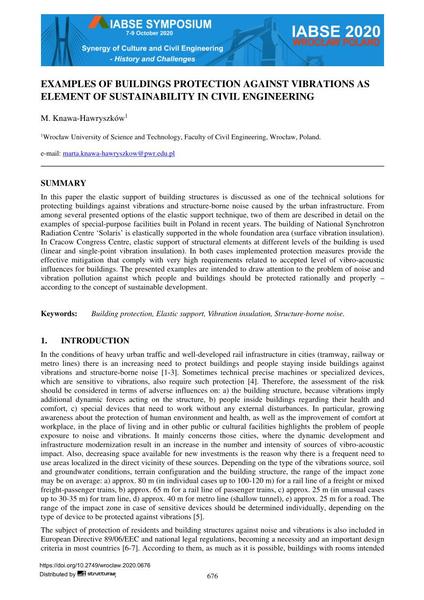Examples of Buildings Protection Against Vibrations as Element of Sustainability in Civil Engineering

|
|
|||||||||||
Détails bibliographiques
| Auteur(s): |
M. Knawa-Hawryszków
|
||||
|---|---|---|---|---|---|
| Médium: | papier de conférence | ||||
| Langue(s): | anglais | ||||
| Conférence: | IABSE Symposium: Synergy of Culture and Civil Engineering – History and Challenges, Wrocław, Poland, 7-9 October 2020 | ||||
| Publié dans: | IABSE Symposium Wroclaw 2020 | ||||
|
|||||
| Page(s): | 676-683 | ||||
| Nombre total de pages (du PDF): | 8 | ||||
| Année: | 2020 | ||||
| DOI: | 10.2749/wroclaw.2020.0676 | ||||
| Abstrait: |
In this paper the elastic support of building structures is discussed as one of the technical solutions for protecting buildings against vibrations and structure-borne noise caused by the urban infrastructure. From among several presented options of the elastic support technique, two of them are described in detail on the examples of special-purpose facilities built in Poland in recent years. The building of National Synchrotron Radiation Centre ‘Solaris’ is elastically supported in the whole foundation area (surface vibration insulation). In Cracow Congress Centre, elastic support of structural elements at different levels of the building is used (linear and single-point vibration insulation). In both cases implemented protection measures provide the effective mitigation that comply with very high requirements related to accepted level of vibro-acoustic influences for buildings. The presented examples are intended to draw attention to the problem of noise and vibration pollution against which people and buildings should be protected rationally and properly – according to the concept of sustainable development. |
||||
